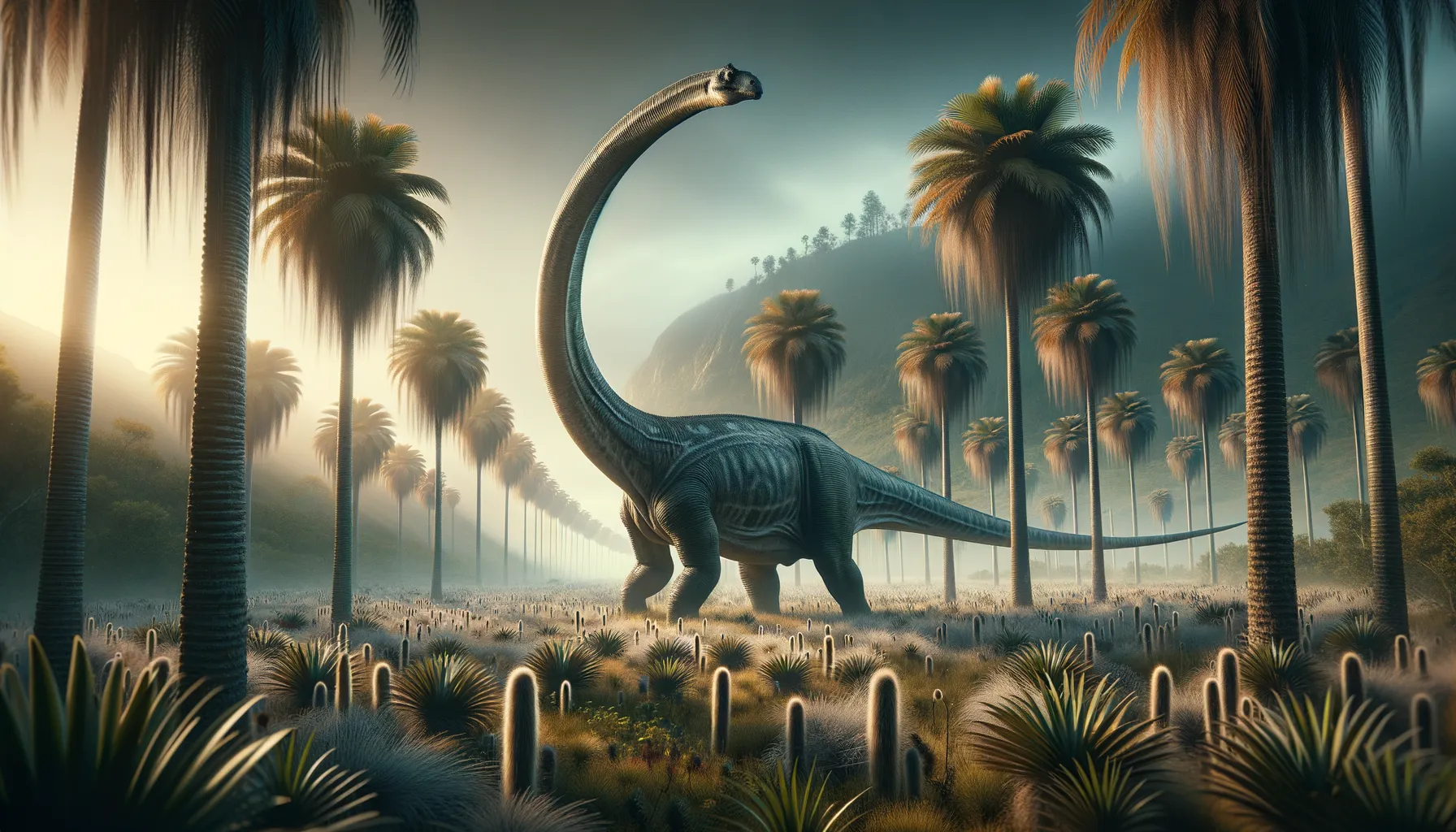
Galvesaurus
Giant of the ancient European lands.
Period
Jurassic
Length
Around 20 meters in length.
Height
Approximately 12 meters tall.
Weight
Could weigh up to 15 tonnes.
Galvesaurus was a long-necked dinosaur that roamed what is now Spain during the Late Jurassic period. Known for its massive size, it was a herbivore that spent most of its time grazing on vegetation. It belongs to the sauropod group, characterized by their enormous bodies, long necks, and tails. This dinosaur's fossils have provided crucial insights into the diversity and adaptation of sauropods in Europe.
Diet
Galvesaurus was a herbivore, feeding on a variety of vegetation available during the Jurassic period. Its long neck allowed it to reach high vegetation that other herbivores could not access.
Hunting
As a herbivore, it did not hunt other animals. Instead, it likely used its immense size to fend off predators, relying on the presence of others in its group for safety.
Environmental challenges
During its time, Galvesaurus faced challenges such as climate fluctuations and competition for food resources with other large herbivores. Its large size may have provided an advantage in surviving periods of food scarcity. Additionally, it had to cope with the threats posed by large carnivorous dinosaurs of its era.
Speed
Likely slow-moving due to large size.
Lifespan
Estimated to live several decades.
First discovery
Discovered in the early 2000s in Spain.
Fun Facts
- Galvesaurus was a large sauropod dinosaur that lived during the Late Jurassic period over 145 million years ago.
- This dinosaur's remains were discovered in Spain, making it an important find for European dinosaur paleontology.
- Galvesaurus is believed to have been a herbivore, feeding on plants with its long neck reaching high vegetation.
- Despite its massive size, Galvesaurus is known from only fragmentary fossils, leaving much of its appearance to scientific reconstruction and imagination.
- The name 'Galvesaurus' honors the town of Galve in Spain, where its fossils were found, showcasing its local significance.
- Galvesaurus helps scientists understand the diversity of sauropods that roamed Europe during the Jurassic period.
- As a sauropod, Galvesaurus would have been characterized by its long neck, long tail, and massive body, typical of its group.
Growth and Development
Galvesaurus likely had a long growth period, taking several years to reach its full size. Juveniles may have been vulnerable to predators until they grew large enough to protect themselves. As it matured, its bones would have strengthened, supporting its massive frame and allowing it to access a wider range of vegetation.
Habitat
Galvesaurus inhabited lush, forested areas with abundant vegetation. The region it lived in had a warm climate, with landscapes that included rivers and floodplains. These environments provided the necessary resources for its survival, including ample plant life for its herbivorous diet.
Interaction with other species
As a large herbivore, Galvesaurus likely coexisted with various other dinosaur species, including both herbivores and carnivores. Its interactions with predators were probably limited to defensive behaviors, such as grouping together for protection. The presence of other sauropods in its habitat may have led to competition for food resources.
Natural lifespan
Galvesaurus possibly lived for up to 70 or 80 years.
Reproduction
Galvesaurus probably laid eggs, like other sauropods. Females likely deposited their eggs in nests built on the ground, possibly in communal nesting sites. Hatchlings would have been relatively small and vulnerable, relying on rapid growth to survive the threats in their environment.
Social behaviour
Galvesaurus may have lived in herds, which provided safety in numbers against predators. Its social structure could have included multiple generations, with older individuals guiding younger ones. Group living would have also facilitated finding food and shared knowledge of their environments.
Fossil locations
Fossil remains of Galvesaurus have been found primarily in the region of Galve in Spain. These locations have revealed important information about its size and lifestyle, as well as contributing to the understanding of sauropod distribution in Europe during the Jurassic period. The preserved fossils provide glimpses into the rich biodiversity of its time.
